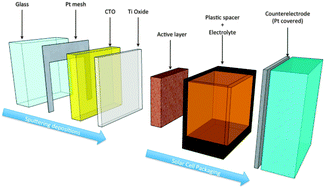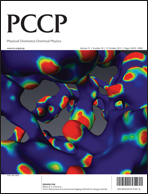An engineered multilayer structure of platinum–cadmium stannate–titanium oxide (Pt–CTO–TO), with different TO layer thickness (in the range 1–5 nm), has been grown at 400 °C on glass substrates by RF magnetron sputtering, following a 2-step procedure without breaking vacuum. To produce an alternative and reliable front contact for dye sensitized solar cells (DSCs), morphology and composition of a TO blocking layer have been studied, paying particular attention to the oxide–oxide (CTO–TO) interface characteristics. The influence of the metallic mesh on the transparent conductive oxide sheet resistance has also been considered. A sputtered CTO layer shows a high average transmittance, over 90%. The Pt mesh yields a drastic reduction in the series resistance, almost one order, without affecting the optical properties. The ultrathin blocking layer of Ti oxide prevents charge recombination, improving the overall performance of the solar cells: +86% in efficiency, +50% in short circuit current, with respect to bare CTO.

You have access to this article
 Please wait while we load your content...
Something went wrong. Try again?
Please wait while we load your content...
Something went wrong. Try again?


 Please wait while we load your content...
Please wait while we load your content...